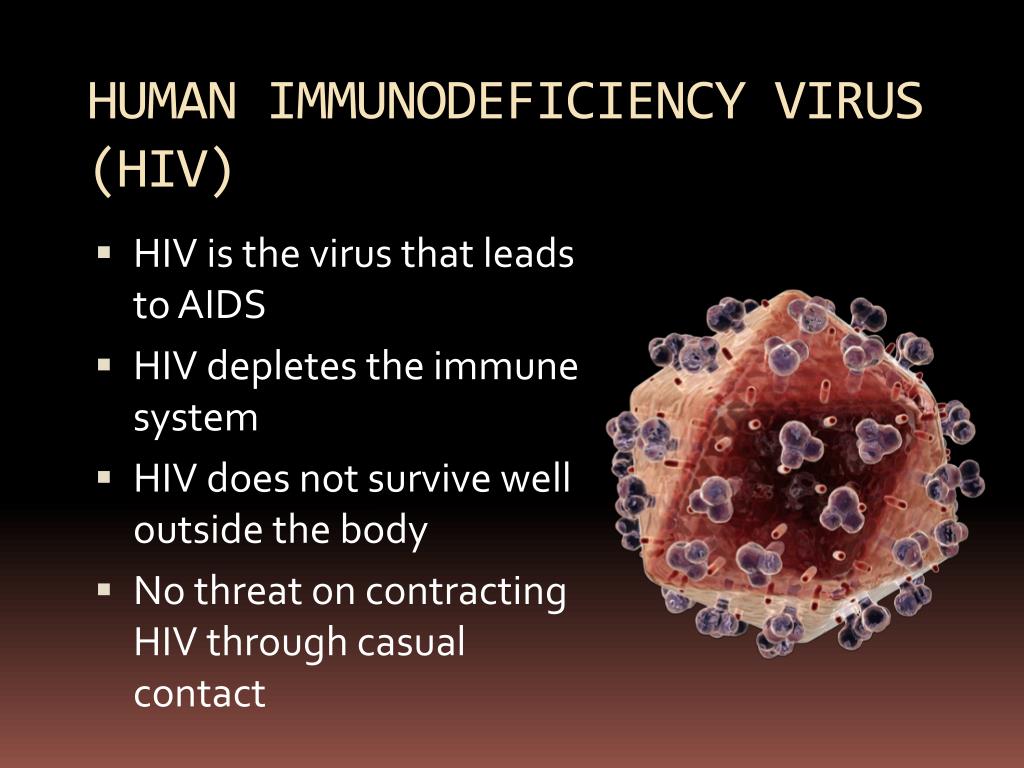
HIV, or Human Immunodeficiency Virus, is a pathogen that undermines the immune system’s integrity, ultimately leading to Acquired Immunodeficiency Syndrome (AIDS). Understanding HIV necessitates a multifaceted approach that encompasses its biology, transmission, manifestations, societal implications, and preventive measures. This discussion aims to elucidate these facets meticulously, thereby presenting a comprehensive perspective on this significant public health concern.
1. The Biological Underpinnings of HIV
HIV predominantly targets CD4+ T cells, critical components of the immune defense apparatus. Once the virus infiltrates the body, it employs its unique mechanism of reverse transcription to convert its RNA into DNA, subsequently integrating itself into the host’s genetic material. This insidious process allows the virus to replicate without the immune system’s immediate detection, effectively undermining the body’s ability to mount an appropriate defense. Over time, the gradual depletion of CD4+ T cells culminates in a state of immunocompromised vulnerability, enhancing susceptibility to opportunistic infections and malignancies.
2. Modes of Transmission
HIV is primarily disseminated through specific biological fluids, namely blood, semen, vaginal secretions, and breast milk. The common routes of transmission include unprotected sexual intercourse, needle sharing among intravenous drug users, and maternal-fetal transmission during childbirth or breastfeeding. Understanding these routes is critical for implementing effective public health strategies aimed at curtailing the spread of the virus. Education and awareness regarding these transmission modalities form the backbone of preventive measures.
3. Clinical Manifestations
Upon contracting HIV, individuals may initially experience flu-like symptoms, often mistaken for a common viral infection. This acute retroviral syndrome phase is transient; however, the virus persists in the body, leading to a protracted clinical latency phase. This asymptomatic stage can last for several years but is marked by ongoing viral replication and immune system deterioration. Untreated, HIV advances to AIDS, characterized by the occurrence of opportunistic infections and severe weight loss.
4. The Consequences of Untreated HIV
As HIV progresses, the diminishing population of CD4+ T cells has dire consequences. The body’s defense against pathogens erodes, making individuals susceptible to a litany of opportunistic infections, including tuberculosis, pneumocystis pneumonia, and certain cancers such as Kaposi’s sarcoma. The psychological impact of an HIV diagnosis often exacerbates the health decline, leading to increased morbidity and mortality rates among affected populations.
5. Diagnostic Techniques
Early detection of HIV is pivotal for effective management and treatment. Various diagnostic tests facilitate this process, with serological assays detecting antibodies to the virus or directly identifying the virus itself. Polymerase chain reaction (PCR) methods allow for direct quantification of viral load, enabling clinicians to assess the stage of infection and determine the appropriate therapeutic interventions. Regular screening is fundamental, especially within high-risk populations.
6. Antiretroviral Therapy: A Lifeline
The advent of antiretroviral therapy (ART) has revolutionized the prognosis for individuals living with HIV. By employing a combination of medications targeting various stages of the viral lifecycle, ART significantly reduces viral load and restores immune function. Adherence to a prescribed regimen is crucial; failure to comply can lead to viral resistance. Understanding the importance of consistent treatment is essential—not only for individual health but also for minimizing community transmission (the treatment-as-prevention model).
7. Preventive Measures and Education
Preventive strategies encompass a holistic approach that integrates education, healthcare access, and community engagement. The use of pre-exposure prophylaxis (PrEP) stands out as an effective method for high-risk individuals, offering them a pharmacological shield against infection. Additionally, public health campaigns focusing on safe sex practices, needle exchange programs, and routine testing contribute significantly to reducing the incidence of HIV.
8. Societal Implications
The ramifications of HIV extend beyond the biological and clinical realms, penetrating the fabric of society. Stigma and discrimination against individuals living with HIV pose substantial barriers to testing and treatment. Addressing these social determinants requires community advocacy, education, and policy reforms aimed at fostering inclusivity and reducing prejudice. This multifaceted approach not only ameliorates the lives of those infected but also enhances public health outcomes across diverse populations.
Conclusion
Understanding HIV necessitates a comprehensive examination of its biological characteristics, modes of transmission, clinical impacts, and preventive strategies. The journey from infection to the potential onset of AIDS underscores the imperative for early diagnosis, effective treatment, and robust public health initiatives. As societal attitudes evolve and medical science advances, the fight against HIV continues, symbolizing a collective commitment to safeguarding global health and inclusivity. Through education, awareness, and compassion, a united front against this pathogen can be fostered, illuminating the path towards a world where HIV no longer thrives on fear and misunderstanding.
